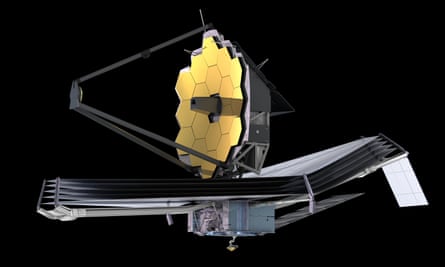Astronomers say a supermassive black hole discovered at the center of an ancient galaxy is five times bigger than the number of stars it contains.
Researchers spotted a supermassive black hole in a galaxy called GS-9209, which is 25 billion light-years away from Earth, making it one of the most distant to ever be observed and recorded.
The team from the University of Edinburgh used the James Webb Space Telescope (JWST) to observe the galaxy and reveal new details about its composition and history.
Dr Adam Carnall, who led the effort, said the telescope – the most powerful ever built – shows how galaxies were growing “bigger and earlier” than astronomers had expected in the first billion years of the universe.
“This work gives us our first detailed look at the properties of these early galaxies, charting in detail the history of GS-9209, which went on to form as many stars as our Milky Way in just 800m years after the big bang.” Succeeded,” he said.
Carnall said the “very massive black hole” at the center of GS-9209 was a “big surprise” that lends weight to the theory that such massive black holes are responsible for shutting down star formation in early galaxies.
“The evidence we see for supermassive black holes was really unexpected,” Carnell said. “It’s the kind of detail we would never have been able to see without JWST.”
 A 3D model of the James Webb Space Telescope. Photograph: Alexander Mityuk / Alamy
A 3D model of the James Webb Space Telescope. Photograph: Alexander Mityuk / Alamy
The GS-9209 galaxy was discovered in 2004 by Karina Caputi, a former PhD student at Edinburgh University who is now professor of observational cosmology at the University of Groningen in the Netherlands.
While GS-9209 contains roughly as many stars as our home galaxy, with a combined mass equal to 40 billion Suns, it is only one-tenth the size of the Milky Way. The researchers said this is the earliest known example of a galaxy that has stopped making stars.
Supermassive black holes can stop star formation because their growth releases enormous amounts of high-energy radiation, which can heat up and eject gas from galaxies. Galaxies need giant clouds of gas and dust to collapse under their own gravity, allowing new stars to form.
“fact [that the black hole] Being so massive means that it must have been very active in the past, with lots of gas falling out, which would have been extremely bright as a quasar,” Carnal said. “All that energy coming out of the black hole at the center of the galaxy would have severely disrupted the entire galaxy, preventing the gas from collapsing to form new stars.”
have more details published in nature,




